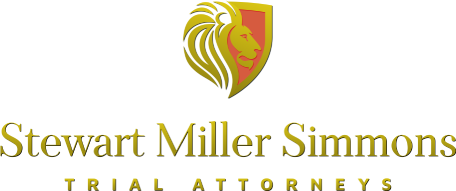Car accidents can happen in a variety of ways in the Atlanta area, from higher speed head-on collisions on the highway to sideswipe or T-bone accidents that occur on neighborhood roads and at intersections where there are stop signs and red lights. Injuries in collisions can also vary widely in terms of severity. The most common type of car accident is the rear-end collision, and these types of crashes often occur when motorists are distracted or following too closely. Who is at fault in a rear-end crash? The answer to that question depends on several factors, which we will discuss with you.
Is the Rear Driver Always At Fault?
In many rear-end collisions, the rear driver is at fault for the crash. That motorist has a duty to keep a safe distance between the car in front, even to the point that a multi-car crash should not result in a rear-end collision if another driver strikes that rear driver from behind.
However, there are some circumstances in which the lead driver (i.e., the driver who is hit from behind) may be fully or partially at fault for the rear-end collision, as well. For example, if the lead driver fails to replace burned-out brake lights, or begins moving in reverse, that lead driver could be at fault. In addition, the rear driver may not be at fault at all in cases where the collision resulted from defective brakes. In those circumstances, both motorists may be able to sue the maker of the defective brakes to seek financial compensation.
Distracted Driving, Aggressive Driving, and the Limits of Liability
In many circumstances where the rear driver is in fact at fault, rear-end collisions are a result of distracted driving or aggressive driving. When a distracted driver is not paying attention, that motorist may fail to stop before crashing into the vehicle in front. Or, when a motorist is following too closely and is tailgating another driver, a sudden stop can result in that tailgating motorist crashing into the vehicle in front.
Yet as we noted above, there are circumstances in which the rear driver might not always be fully or even partially liable for a rear-end collision. In cases where both drivers—the lead and rear driver—bear responsibility for the collision and the lead driver files a claim, it will be critical for that lead driver to understand how Georgia’s comparative fault law works. As long as a plaintiff is less than 50 percent at fault, the plaintiff can still recover but the damages award will be reduced by the plaintiff’s portion of fault. Once the plaintiff is 50 percent or more at fault, the plaintiff is barred from recovery.
Contact a Car Accident Lawyer in Atlanta Today
Do you need assistance filing a car accident claim after sustaining injuries in a rear-end crash? When you have been injured in a rear-end collision, it is important to work with an Atlanta car accident attorney to determine liability and to file a claim against the at-fault motorist. Do not hesitate to get in touch with our firm to learn more about how we can assist you. Contact Stewart Simmons Trial Attorneys online or call us to find out more about filing a car accident lawsuit after a rear-end collision.
